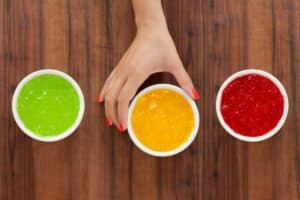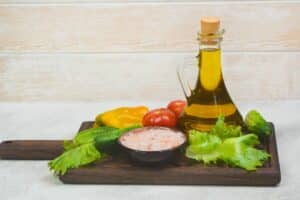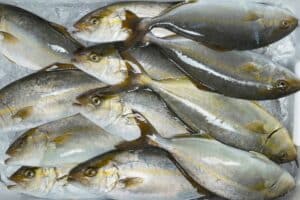Wasabi is a spicy member of the horseradish family, and you’ll usually find it added to seafood dishes like sushi. This unique, green condiment grows naturally in Japan and parts of Russia, but it’s notoriously difficult to source.
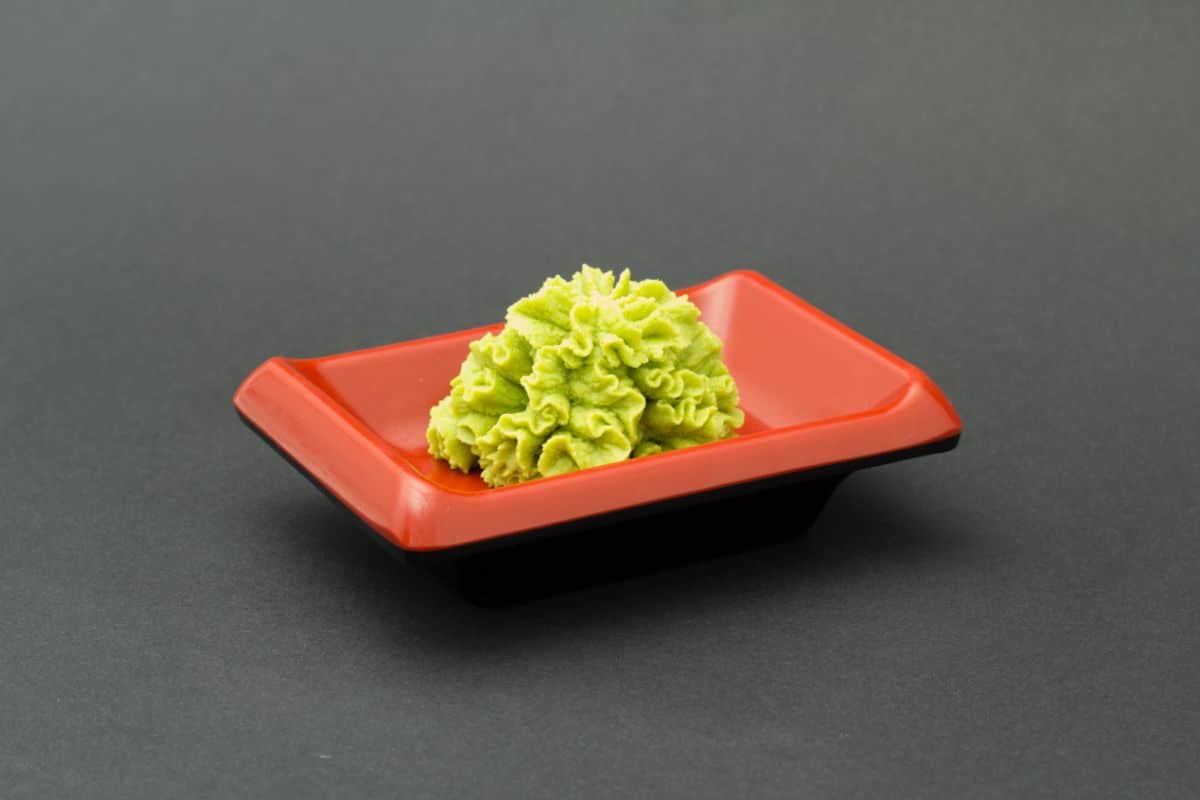
Wasabi is incredibly sensitive to any changes in its environment, which means it comes at a high market price, and it can be difficult to find the real thing.
Don’t lose hope just yet. It’s still pretty easy to make wasabi yourself, and in this post, we’ll be walking you through the ins and outs of this well-loved condiment. Learn what it is, how to make it, the health benefits, and more.
What Is Wasabi?
Wasabi, also called Japanese horseradish, is a plant belonging to the Brassicaceae family.
Wasabi is usually recognized as that punchy, flavorsome green paste that’s served with sushi, but the natural plant is native to both Japan and some areas of Russia, and it can be found growing naturally along river valleys and stream beds.
Although wasabi is a popular condiment to serve with sushi, it can actually be served alongside a variety of dishes, as long you don’t mind a little bit of heat!
What Is Wasabi Made Of?
Wasabi is usually eaten as wasabi paste, but believe it or not, most modern pastes don’t actually contain wasabi. Instead, they contain an alternative selection of ingredients that imitate the flavor of wasabi.
Traditionally, wasabi is made from the rhizome of the wasabi plant. The rhizome is like a plant stem that grows beneath the ground, and it can be found where you would expect to see the root.
This underground stem is then grated up finely to create a real wasabi paste. It’s a pretty similar technique to grating ginger, except wasabi has a less fibrous texture. Real wasabi is pretty expensive. That’s why you’ll usually come across ‘fake wasabi’ instead.
This wasabi uses cheaper ingredients to make it more accessible, and it usually comes in squeezy tubes, powders, or packets.
These types of imitation wasabi can have as little as 1-3% wasabi in them, and it’s usually mixed with European horseradish to create an affordable alternative.
What Does Wasabi Taste Like?
Wasabi has a truly unique flavor. It can be described as herby, fragrant, plant-like, and even slightly pickle-esque. Most people tend to describe wasabi as having a umami flavor.
That is a term used to describe meaty, savory, and heart foods that are strong, but not particularly sour, salty, bitter, or sweet. Most people who enjoy the flavor of wasabi find it pretty addictive.
When you first start eating wasabi, you’ll notice it has a short-lived fiery kick, swiftly followed by subtle flavors of fish.
The wasabi plant contains a compound called allyl isothiocyanate, also found in mustard and horseradish, and it’s responsible for giving wasabi its spicy kick.
Although we’d consider wasabi a ‘hot’ food, even those who don’t eat many spicy foods are likely to find it quite palatable. The heat is pretty short-lived, and it doesn’t linger with the aftertaste.
Do Real And Imitation Wasabi Taste Different?
Yes, real and imitation wasabi taste pretty different, and once you’re familiar with both, you’ll be able to tell the difference. Although most imitation wasabi doesn’t taste drastically different from the real thing, it actually tends to be a little spicier.
Real, fresh wasabi is often more delicate, refreshing, mellow, and even sweet. Real wasabi will still have some ‘heat’ to it, but it’s not as intense as imitation wasabi.
Imitation wasabi also tends to have a much thicker consistency than real wasabi. Real wasabi, on the other hand, will have a more gritty, grated texture.
Horseradish Vs. Wasabi
Although horseradish and wasabi both belong to the same family, they’re different plants with different flavors and characteristics.
Horseradish is often used as an ingredient in imitation wasabi, but it has some pretty big differences from the real thing. Here are some of the biggest differences between horseradish and wasabi.
- Horseradish is often used to add spice to dishes such as salads and roast beef. However, the flavors in wasabi tend to complement sashimi and sushi better.
- Wasabi paste is made by blending the wasabi rhizome with water, while horseradish sauce is made by grating the horseradish root with vinegar.
- Japanese horseradish (wasabi), is a type of perennial plant that reaches maximum heights of 50 cm and boasts a collection of heart-shaped leaves. It also has a thin, green, punchy-flavored rhizome. Traditional horseradish grows to around 1.5 meters tall and has round, large leaves. Its roots are also fleshy, thick, and white with a slightly pungent flavor.
The Health Benefits Of Wasabi
Wasabi isn’t just a delicious addition to your sushi. It also comes with some pretty impressive health benefits.
Antibacterial Properties
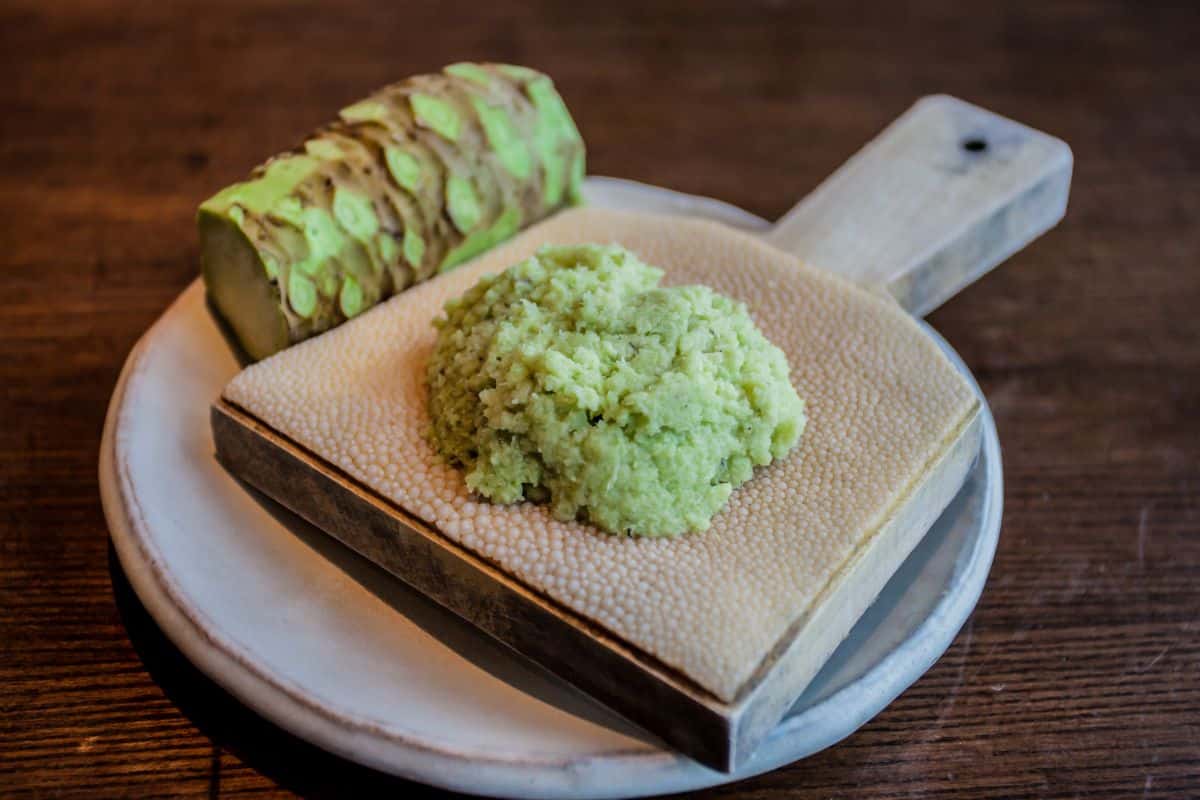
Wasabi contains a class of compounds called isothiocyanates (ITCs), which give this unique vegetable most of its health benefits.
ITCs may also give wasabi its impressive antibacterial properties, which are thought to protect against pathogens that generate food poisoning and H.pylori.
May Contain Anti-Inflammatory Properties
Wasabi may also contain anti-inflammatory properties that could help treat infection and injury, eradicate toxins, and promote better general health.
If inflammation in the body becomes chronic, it could lead to a variety of serious conditions such as diabetes, heart disease, and cancer.
There is some evidence to suggest that the ITCs found in wasabi may help suppress the enzymes and cells that produce inflammation in the body.
Could Help Fight Cancer
The ITCs found in wasabi are pretty powerful, and some believe they may even be able to help fight cancer. The ITCs found in the wasabi root were found to prevent acrylamide from forming.
This chemical can breed in some foods when they’re exposed to high cooking temperatures, and some researchers believe that a high intake of acrylamide may increase the risk of cancer.
Although the results are promising, so far, these studies have only been performed on animals. More human research is needed to determine whether or not the same results apply.
Why Is Wasabi So Expensive?
There’s a reason why imitation wasabi is so in-demand, and it’s mainly because the real thing is much more expensive. Real wasabi can be rather difficult to grow, and it requires very specific conditions to thrive.
Even the smallest change to the wasabi’s environment can damage the plant and kill it off, and this is what gives real wasabi such a high market price.
This is why many wasabi-lovers opt for imitation wasabi instead, as it tastes pretty close to the real thing, but comes with a much more accessible price tag.
How Do You Make Wasabi?
This in-demand, favorsome condiment can be made in a few ways and enjoyed with a variety of Asian dishes and sushi.
When you know what you’re doing, wasabi is actually pretty easy to make, and it only requires a few ingredients! Here are a few ways to make wasabi at home:
- Choose the Rhizome: When you’re shopping for a wasabi rhizome, be sure to choose one that has crisp, healthy leaves, a smooth root, and a firm texture. Rhizomes can be hard to come by as they grow native to Japan, and some limited areas in the US and Canada. Check your local Asian grocery store for more information.
- Trim The Rhizome: If you’ve managed to find a rhizome, you can now trim off any of the leaves at the end of the rhizome. However, you don’t have to throw these. The leaves can also be stored and eaten later, and many people enjoy adding them to their salads for some extra flavor!
- Prepare the Wasabi: Now, you’ll need to prepare your wasabi. You can do this by gently washing the outside of the rhizome and getting rid of any blemishes, bumps, or marks. Now, leave the root to dry naturally before moving on to the next step.
- Grate and Press: Once it’s dry, you can now use a grater to remove your desired amount of wasabi. Then, collect your grated wasabi and press it gently into a ball shape.
- Rest: Once you’ve pressed your wasabi into a ball, you can leave it to rest for around 10-15 minutes. This will enhance the flavor of your wasabi.
Making Paste With Wasabi Powder
If you have a genuine wasabi powder, you can follow these steps to make your wasabi:
- Mix: Start by mixing equal parts wasabi powder and water together in a container or a bowl.
- Stir: Now, you can gently stir your mixture together until the ingredients are combined. You should end up with a slightly thick wasabi paste!
And that’s it! As rhizomes can be hard to find, most people tend to use wasabi powder to create their wasabi paste. It’s quick, easy, and much more affordable than buying a rhizome.
If you’re short on time and money, we’d highly recommend using a powder to create your wasabi. Once you’ve made your paste, you should add it to a container and keep it sealed with a lid to prevent it from spoiling.
We’d recommend adding a small amount of olive oil to the wasabi mixture and storing it in the refrigerator to help preserve its flavor and freshness.
The Bottom Line
Wasabi is a condiment like no other. It’s hard to compare wasabi to anything else because it’s so unique, but if you love your seafood, there’s a strong chance you’ll love adding wasabi to your meals!
This distinctive and slightly hot plant can be hard to come by but fear not. Even if you only have access to imitation wasabi, you’ll be pleased to know that it tastes pretty close to the real thing. It’s also incredibly easy to make it yourself!


